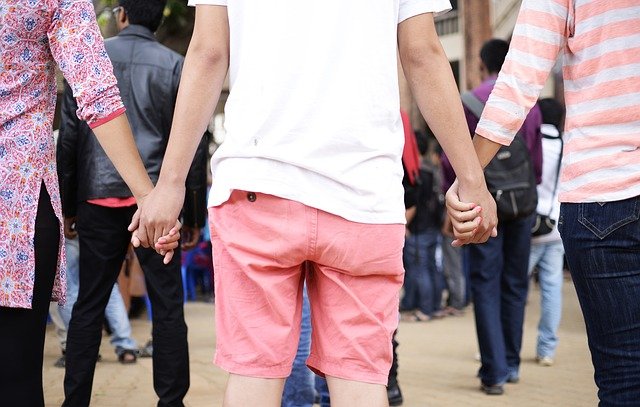 Sending an encouraging note to someone could have a profound, positive impact on someone struggling with difficult thoughts and emotions.
Sending an encouraging note to someone could have a profound, positive impact on someone struggling with difficult thoughts and emotions.
When I was a high school junior, I sent a letter of concern to a senior classmate, and I might have saved his life.
I didn’t send the letter to tell him how much I liked him, as I did like him. I was too embarrassed to convey those thoughts. Instead, I sent a letter to encourage him because I had heard he was thinking about killing himself.
Over 30 years ago, word got around the old-fashioned way. We talked about our friends when walking home from school. So, I didn’t have any written proof, such as through a Facebook, Snapchat or Twitter post. Many people today will leave hints or obvious signs of their mental status on social media. I just heard about it while talking to other people.
I could have ignored this and secretly hoped nothing would come of this rumor. But something compelled me to write a letter to him. Even though I had a crush on him and would have been flattered for him to confide in me, I put myself aside and encouraged him to talk to anyone. In the letter I reminded him of all the people who cared about him: his family, friends, teammates.
Death by suicide increasing
Until recently, my first-hand knowledge of people with suicidal thoughts was severely limited. In the past five years, I have attended more funerals for my friends’ young adult children (younger than 30) than I have for all my friends of the same age as me and older. And I have acquired many friends over my five decades of living.
Recently, several friends lost their young adult children to suicide and several more to “accidental” drug overdose. Death from suicide has hit its highest rates since World War II. In the U.S., suicide deaths are two times greater than homicides, according to the Centers for Disease Control and Prevention.
The friends in my age group who have passed died from organic illnesses, such as cancer, heart disease or diabetes. That’s not to say I haven’t lost people in my own peer group due to suicide. My first exposure to a death by suicide was at age 9. My mother’s friend took her life because of excruciating pain from rheumatoid arthritis and intolerable verbal abuse from her husband. Close to two decades later, I lost my second friend who was unable to effectively cope with a relationship which ended.
Yet, the increase from this specific cause of death the last five years, has been staggering and stunning in my personal world, especially as I witness the unrelenting grief mothers and fathers suffer at the loss of a child.
Loneliness is a crippling experience
Loneliness has been identified as the biggest culprit in personal dysfunction across the adult life development span. Yet, millennials report suffering from it the most. It’s easy to blame this loneliness dilemma on the overuse of social media and other technology. Yet, there’s more to the experience of loneliness than too much time on Facebook, Twitter, or X-box live.
Some of the contributing factors to the experience of loneliness include the violent culture our society is immersed. If you perceive the world as a dangerous place, then you must be on guard against injury and death. This heightened state of alertness prevents feeling connected when everyone is perceived as a possible enemy. Everyday errands and events, such as attending music concerts and theaters, dancing at night clubs, and shopping at Wal-Mart have essentially become a gauntlet run to survival.
Handwritten notes are worth the effort
Yet, many years ago a few people in the psychiatry field discovered a way to help hopeless people feel tethered to the world. This intervention is the same innocent one I took in high school: handwritten notes letting another human being s/he is being thought of.
Psychiatrist Jerome Motto and Statistician Alan Bostrom conducted a research project with 869 people between 1969 and 1974. A contact group received for two years cards or notes on a periodic basis after discharge from an inpatient stay.
In the group who received the notes only 1.80 percent had committed suicide. This is compared to 3.52 percent of people who didn’t. “Even 13 years after hospital discharge, patients who had received letters from the hospital still had lower rates of suicide than those who had not,” according to the Stanford SPARQ website.
A website with suggestions
Today, the volunteer group Now Matters Now is advocating and providing a means for people to learn how to support themselves (if suicidal) or someone they love (who is suicidal.) You can find a page on their website with suggestions of what to say in a caring note to someone. Or if you struggle with suicidal thoughts, the website provides many suggestions from those who have been there about what works to overcome and mange this experience.
If you are in crisis right now, please call the National Suicide Prevention Lifeline at 1–800–273-TALK (8255) or contact the Crisis Text Line by texting TALK to 741741.
When I sent a note, I didn’t have any motive other than to encourage someone I liked. I sent it anonymously in the mail with no return address and no signature. I’ve always been curious what my high school crush thought about this random letter. I can’t say if my note actually did prevent a death. But what I can say is he is still alive.
And that’s all that really matters.

